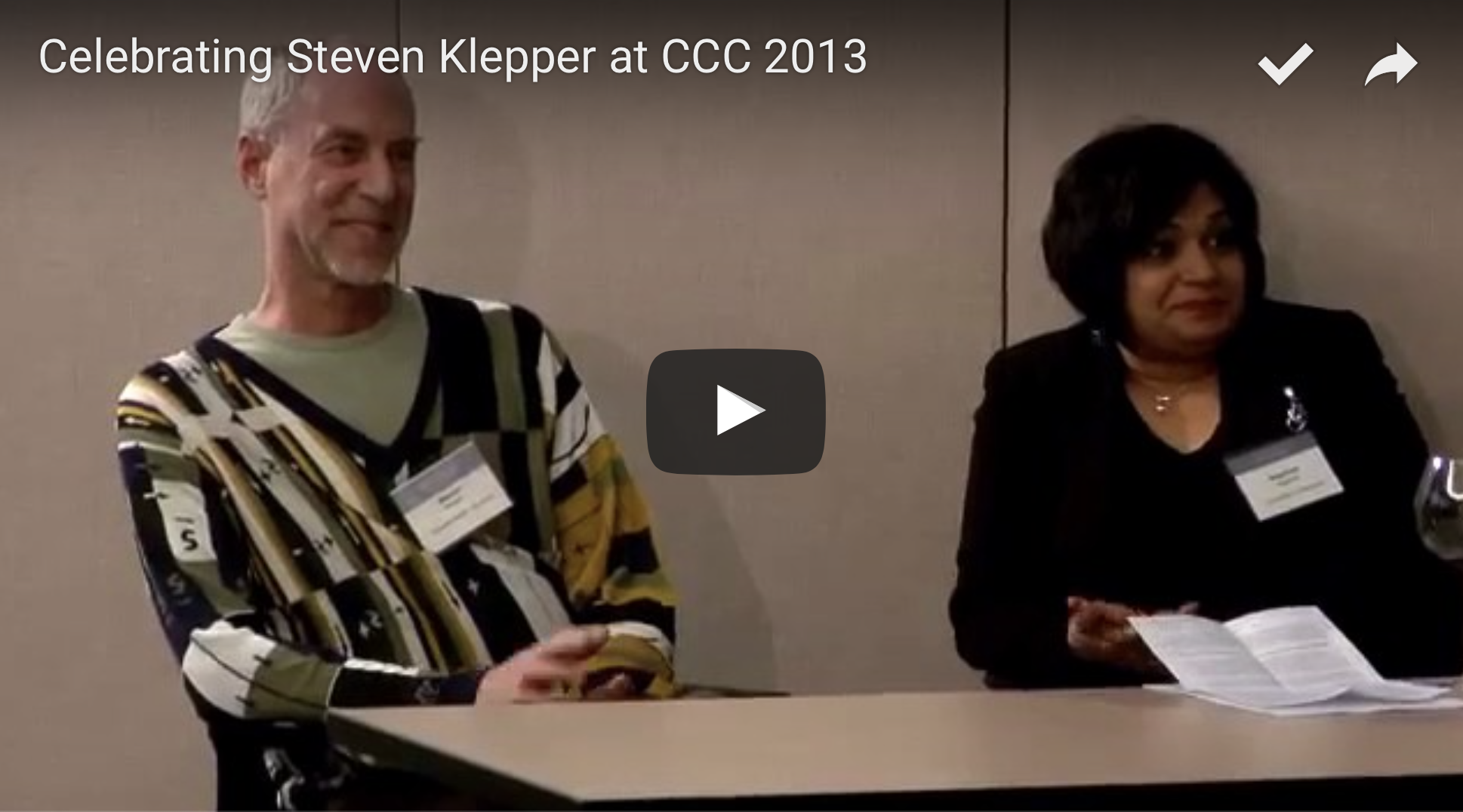
I have created a number blogs to publish useful information. One is a Teaching Blog dedicated to providing past, present and future students useful information.
My Research Blog is dedicated to disseminating useful information to other researchers and scholars.
A new blog is focused on how to improve forecasts, which is a key strategic skill: forecasting-strategy.ch
To track progress in machine learning, I also run an AI blog.
There is also a blog that has collected all of Charles Tilly’s Writings on Methodology.
Below you find every entry across all my Blogs.
Posted by Johann Peter Murmann
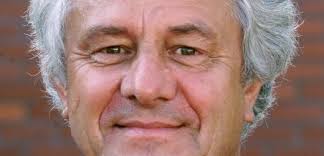
SAP Founder, Hasso Platter, on the difficulty of changing a firm rather than starting a new one
Hasso Platter co-founded SAP. For the past two decades he has been involved in trying to adopt the SAP to area of internet and cheap clout computing.
When asked whether it is harder to set up a new company or to steer an existing company in a new direction, he does not hesitate with his reply.
“The bigger challenge, I’d say, is the latter one.”
To reinvent a successful company such as SAP is much more difficult. “You have to convince people that change has to come, and that is difficult,” he says, noting that it is easier to convince Americans about the future than people in Switzerland or Germany. “We are more conservative. We are a little bit afraid of the future. Americans are not afraid of the future.”
Source: Financial Times
Categories: Management |
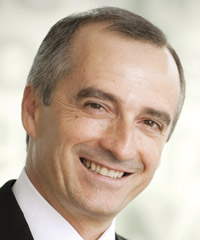
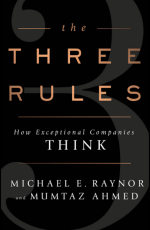
The Three Rules: How Exceptional Companies Think
In their new book, The Three Rules: How Exceptional Companies Think, Michael E. Raynor and Mumtaz Ahmed carefully identified from all publicly listed American firms those firms that performed very highly over long periods of time. When they tried to find out what they had in common, they could not identify concrete behavior. What made the companies different, according to the authors, where their mindsets. This leads Raynor and Ahmed to articulate three rules for success.
Better before cheaper: Compete on differentiators other than price.
Revenue before cost: Drive superior profitability with higher prices or higher volumes, not lower cost.
There are no other rules: Change anything/everything in order to abide by the first two rules.
The Economist wrote a very thoughtful review about the entire genre of business books that tries to glean lessons from studying successful players. I agree with their assessment that in the end,
The difficult question is how to find that profitable niche and protect it. There, The Three Rules is less useful.
Categories: Bookshelf | Management |

Microsoft’s New CEO Nadella on how to organize for innovation
In a wide-ranging interview with the NY Times, Nadella explained his views on how to organize for innovation.
Q. Your company has acknowledged that it needs to create much more of a unified “one Microsoft” culture. How are you going to do that?
A. One thing we’ve talked a lot about, even in the first leadership meeting, was, what’s the purpose of our leadership team? The framework we came up with is the notion that our purpose is to bring clarity, alignment and intensity. What is it that we want to get done? Are we aligned in order to be able to get it done? And are we pursuing that with intensity? That’s really the job.
Culturally, I think we have operated as if we had the formula figured out, and it was all about optimizing, in its various constituent parts, the formula. Now it is about discovering the new formula. So the question is: How do we take the intellectual capital of 130,000 people and innovate where none of the category definitions of the past will matter? Any organizational structure you have today is irrelevant because no competition or innovation is going to respect those boundaries. Everything now is going to have to be much more compressed in terms of both cycle times and response times.
So how do you create that self-organizing capability to drive innovation and be focused? And the high-tech business is perhaps one of the toughest ones, because something can be a real failure until it’s not. It’s just an absolute dud until it’s a hit. So you have to be able to sense those early indicators of success, and the leadership has to really lean in and not let things die on the vine. When you have a $70 billion business, something that’s $1 million can feel irrelevant. But that $1 million business might be the most relevant thing we are doing.
To me, that is perhaps the big culture change — recognizing innovation and fostering its growth. It’s not going to come because of an org chart or the organizational boundaries. Most people have a very strong sense of organizational ownership, but I think what people have to own is an innovation agenda, and everything is shared in terms of the implementation.
Source: NY Times
Categories: Strategic Management 2 | Topics | Systems | Strategic Management 4 | Topics | Management Process |

Founders sell WhatsApp to Facebook: Motives not clear
The founders of Whatsapp were very clear that did not not what to sell advertisement through the messaging app. (See their 2012 statement.They did not even want to collect data on their users. So why did they sell themselves to Facebook, which is all about collecting more data on us to sell it to advertisers? Here is a clue in their blog. Maybe they were tired of having to manage a business rather than just design a product.
Categories: Strategic Management 1 | Topics | Fundamental Objective | Strategic Management 3 | Topics | Corporate Growth |

Joel Mokyr Sees no End to Innovation
Mokyr points out the modern GDP measures are not accounting for improvements in quality of products and life.
He sees no end to innovation. Basic science needs to be funded by governments because private individuals and corporations cannot appropriate the returns from these investments. He sees culture that encourages natural skepticism of students as a key ingredient for furthering innovation of a country.
Categories: Innovation |

Improving Your Case Method Skills: Two Methodological Pieces by Michael Scriven
The philosopher and polymath Michael Scriven has written extensively on the logic of explanations. Here are two of his most valuable pieces. The first one is how one can make good inferences from single case studies and the second one one explanations in history.
1. Scriven, M. (1974). Maximizing the Power of Causal Investigations: The Modus Operandi Method. In W. J. Popham (Ed.), Evaluation in education: Current applications: 68-84: McCutchan Pub Corp. Download
2. Scriven, M. (1966). Causes, Connections, and Conditions in History. Philosophical Analysis and History. W. H. Dray, Harper & Row: 238-264. Download
Categories: Methodology |

Scaffolding in Economics, Management, and the Design of Technologies
This chapter reviews the ideas that have been developed to describe the emergence and change of structures in three fields: Economics, Management, and Design of Technologies. The chapter focuses on one empirical setting, the economy, and more specifically how firms, industries, and technologies change over time. Today’s industrialized economies are very different from the economies before the industrial revolution. The chapter presents key theoretical ideas from evolutionary economics, management, and technology that try to explain why and how economy has been so dramatically transformed over the past 400 years. You can download a draft of chapter here or find the book in your library or buy it at Amazon.com or MIT Press.
Categories: Bookshelf | Economics | Management |

Two Diagrams that show why PC makers have trouble
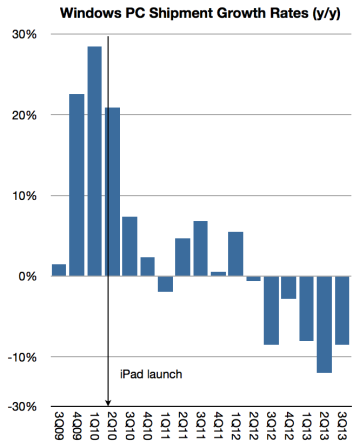
Click on “more” to see chart that combines PC and tablet sales.
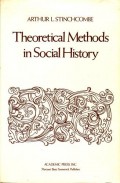
Excerpts from Arthur Stinchcombe’s on “Theoretical Methods in Social History”
Ten years ago I read Stinchcombe’s “Theoretical Methods in Social History”. I recently reread the parts that I had highlighted and I thought it useful to share some key passages.[1]
One does not apply theory to history; rather ones uses history to develop theory. [2]
——
It is rather that the fashion in quantitative history has come to be that one must agree to be voluntarily ignorant of the any evidence other than numbers. [3]As the argument develops, it will become clear why I am unenthusiastic about most quantitative history. Let me state the argument in capsule form.
For a number, say a count, to be theoretically interesting, it has to be a count of a comparable instance. What instances comparable for a scientist is that those instances have identical causal impact. Thus a count is more illuminating, the more theory and the more detailed examination of the facts went into making the instances counted comparable. But this ordinarily means that making a count should be the last stage of a scientific enterprise, a stage reached only after an extensive development of theory on what makes instances comparable. Is the proletarian in the Vyborg district of Petersburg or in the Baltic Sea Fleet equivalent in impact on the Russian Revolution to a proletarian in Moscow? Trotsky convinces me he was not (and if the proletarian was a she, in either place, she was not equivalent to a male proletarian either). Consequently, a count of proletarians in Russia in 1917 is fact of relatively little interest. [4]
Categories: Methodology |

Letters from China: “Breathtaking Beijing”
In early June, I visited Beijing for the first time. The Chinese capital is breathtaking in every sense of the word. The city has gone through an amazing development and is more glitzy than many American and European large cities. It definitely feels more modern and dynamic than Philadelphia, whose neighborhoods I explored while living there for most of 2012.

As a teenager in the early 1980s, I visited a number of communist countries: East Germany, Poland, Czechoslovakia. So I find it easy to imagine what Beijing would have looked like before 1978. In mere 30 years, a run-down and crumbling place was transformed into a modern city, which is far better developed than any city I have seen during my visits to formerly communist Ukraine in 2004 and 2009. Also in relation to Rio De Janeiro, Beijing seems newer, and lot cleaner especially compared to the outskirts of Rio.
Categories: China |

Guy Kawasaki on Lessons he Learned from Steve Jobs
PM: Guy also shows how to put together a great simple slide presentation.

My Editorial Statement for Management & Organization Review
MOR is the official journal of International Association for Chinese Management Research. While the journal is focused on China, comparative studies of China and other countries are highly appropriate for the journal.
I am interested in detailed studies of how technologies, organizations, industries and supporting institutions evolve over time. Methodologically, I hope to attract comparative case studies that are rich in descriptive data that is both quantitative and qualitative. I also hope to attract historical case studies. Papers that feature particularly innovative companies or organizational and institutional structures are of particular interest.
Examples of papers that illustrate work of interest to this editorial area can be found here.
Categories: Publications |
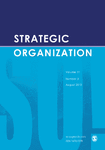
Collection of Research Methods articles in SO!
SO! has pulled together the collection of articles on research methods that the journal published over the years. I for one will come back to these articles. I suspect many doctoral students will find them useful.
Ann Langley: Over the years, Strategic Organization has published a number of very useful and insightful articles on research methods for studying strategy and organization. This section of the website groups together a collection of the most interesting articles of this type. Both quantitative and qualitative researchers will find ideas for novel approaches and pointers for enhancing the quality of their research among these contributions.
Categories: Conference Presentations |

AOM 2013: Two workshops I am participating in: History and Design Evolution
History and Strategy: Toward an Integration of Theory and Method History and Strategy
New Presentation Slides for Download. Click here.
Program Session #: 80 | Submission: 14401 | Sponsor(s): (BPS, MH, TIM)
Scheduled: Friday, Aug 9 2013 11:45AM - 1:45PM at WDW Swan Resort in Swan 10
Organizer: Steven Kahl; Dartmouth College (TUCK);
Organizer: Brian S. Silverman; U. of Toronto;
Participant: David A. Kirsch; U. of Maryland;
Participant: Huseyin Leblebici; U. of Illinois;
Participant: J Peter Murmann; Australian School of Business, UNSW;
While historical research has played a central role in the development of the strategy literature, it remains underrepresented in strategy journals. This PDW explores how historical analysis can inform strategy research. As the strategy field continues to develop dynamic models of strategy, the historical perspective can provide unique perspective, and could potentially even develop a history-based theory of strategy. Yet, doing historical research in strategy faces methodological challenges given its different approach to the development of theory and use of evidence. Consequently, this PDW addresses the different opportunities available to strategy scholars to engage in the historical method. The format of the PDW is a combination of 1) presentations in which scholars experienced in conducting historical analysis within the strategy and organizational fields discuss the challenges of doing this work and 2) interactive breakout sessions in which participants break into smaller groups to discuss design of a historical study in topical strategy research areas, such as dynamic capabilities and industry evolution. These breakout sessions will help identify how the historical approach can make novel theoretical contributions and reveal roadmaps for pushing this work further.
Search Terms: History/Historical Analysis , Strategy , Theory and Methods
Architectural Strategy and Design Evolution in Business Ecosystems: Opportunities and Challenges
Ecosystem Design and Strategy
Program Session #: 279 | Submission: 10331 | Sponsor(s): (TIM, BPS, ENT, OMT)
Scheduled: Saturday, Aug 10 2013 10:15AM - 12:45PM at WDW Swan Resort in Swan 3
Categories: Innovation | Methodology |

Honoring the late Steve Klepper
Steve Klepper, who has been an inspiration to so many of us, recently passed away. At the 20th anniversary of the CCC colloquium, we honored Steve Klepper. The video captures very nicely how much Steve touched an entire generation of doctoral students working on the intersection of industry evolution and technological innovation.
Categories: Entrepreneurship | Innovation | Management |

Nelson, Richard R. (born 1930)
This short article is my entry on Richard R. Nelson in the Encyclopedia of Strategic Management
Richard R. Nelson (b. 1930) is an American economist who has had a significant influence on the field of strategic management. The fundamental question driving his work is how societies can be organized to improve their material well-being. In answering this question, Nelson identifies sustained technological innovation and a diverse range of often industry-specific institutional structures as the key engines of economic growth. He sees business firms as playing a key role in the growth process because firms are the carriers of the knowledge and abilities required to produce the complex product and services that characterize modern economies.
Keywords: evolutionary theory, firms, innovation, organizational capabilities, patents, Carnegie School, RAND Corporation; science policy, tacit knowledg
Categories: Innovation | Publications |

Touchstones: Examples of Excellent Papers
Empirical Papers
Here are examples of excellent papers that I encourage people to use as touchstones and imitate when written small-n or case study papers.
Danneels, E. (2011). “Trying to become a different type of company: dynamic capability at Smith Corona.” Strategic Management Journal 32(1): 1-31.
Mirabeau, L., & Maguire, S. (2014). From autonomous strategic behavior to emergent strategy. Strategic Management Journal, 35(8): 1202-1229.
Miller, R., M. Hobday, T. Leroux-Demers and X. Olleros (1995). “Innovation in Complex System Industries: the Case of Flight Simulation.” Industrial and Corporate Change 4(2): 363-400.
Murmann, J. P. (2013). “The Coevolution of Industries and Important Features of their Environments.” Organization Science 24(1): 58-78.
Siggelkow, N. (2002). “Evolution toward Fit.” Administrative Science Quarterly 47(1): 125-159.
On Method
Here are some methodological texts that I found particularly useful in helping me refine my case study design skills.
Categories: Methodology | Writing |

Announcing a Special Feature: “Letters from China”
During the first two weeks of June, I will visit China for the first time. To share my impressions, I plan to write a few Letters from China. Today I want to give you a bit background on the trip. For a long time, I wanted get out behind my desk and see China with my own eyes. This visit is long overdue given that I started to research the development of the Chinese synthetic dye industry five years ago.
The goal of my visit is to get a deeper understanding of what the future of China will likely look like. More specifically, I want to become more knowledgeable about whether China will become the world leader in high-tech industries and if so how. For this reason, I want to build connections with people in China who are participating in or following these developments. Until now I have been relying on Hong Jiang to be my eyes in China. I recruited her from China to write her doctoral thesis under my supervision. Together we published an article entitled Regional institutions, ownership transformation, and migration of industrial leadership in China, showing how the leading centers of synthetic dye production industry shifted twice in the period from 1978 to 2008 because of differences in the institutional composition of regions within China. Hong is currently back in the field trying to find more evidence on how personal networks allowed entrepreneurs to access crucial knowledge from established firms. Our particular challenge is to find knowledgeable people from companies that went out of business so we can establish with more certainty that they lacked the personal contacts that allowed their rivals to be more successful.
It is important to realize that synthetic dye technology was developed in the West decades ago and has become stagnant. This is why Chinese firms could become the largest producers in the world by simply imitating product innovations made abroad. Now, I am looking for one or more industries where Chinese firms are not simply copying innovations made abroad but where they are at the frontier of global knowledge. If you think you know such an industry, please contact me. After my trip to China, I hope to have a better sense of the kind of high-tech industries in which China may be pushing the global knowledge frontier.
To avoid false expectations, let me emphasize that I am not writing my Letters from China as a “China expert.” I am very well versed in Western social theory and, more specifically, evolutionary theory in the social sciences: As an evolutionist, I have strong theoretical commitment that success is built on a mountain of failures. Or, to put it more simply: China cannot become the leader in a sector without trying out many things and figuring out what works through experience. (I lay out this perspective in non-technical terms in Scaffolding in Economics, Management, and the Design of Technologies). But I have modest credentials regarding the “facts on ground” in China. Aside from what Hong Jiang taught me, I can trace most of my knowledge about China to three books that I found particularly useful.
Categories: China | Innovation |
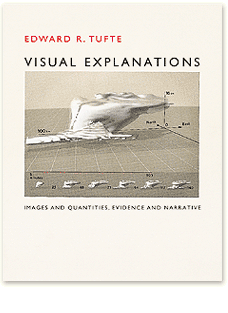
How to tell stories in graphical way
With his books on how to present data in a graphical way, Edward Tufte has taught many of us to be more creative in how we try to communicate a story based on quantitative data. Here is a short video that explains the power of communicating complex data in a graphical way. Tufte appears in the video.
Categories: Lectures | Psychology |

Gonski is a towering figure of Australian life. But his ideas of leadership apply everywhere in the Western world. To appreciate a bit more Gonski’s words, read this profile on him.
Categories: Management | Psychology |
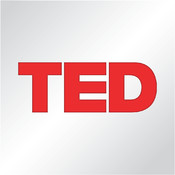
Daniel Kahneman: The riddle of experience vs. memory
This is a very thought-provoking Ted talk on happiness and how we construct our judgement of happiness. TED summarizes: Using examples from vacations to colonoscopies, Nobel laureate and founder of behavioral economics Daniel Kahneman reveals how our “experiencing selves” and our “remembering selves” perceive happiness differently.
One of the interesting facts that he reports based on a Gallup survey of Americans is this: People who make more than $60,000 do not experience more happiness as they make more money. Above this threshold, money does not make you happy. Below this threshold ever dollar less will make decrease your experience of happiness. This leads Kahneman to remark: “Money does not buy happiness. But lack of money causes misery.”
Categories: Psychology |

AOL tries to reinvent its business model
AOL, whose dial-up internet business was destroyed by fast cable, DSL and not mobile phone internet connections connections (see graph) is trying to reinvent itself as a content company. It was to write local news and take the Huffington Post global. Read details on Economist.com: AOL’s second life.
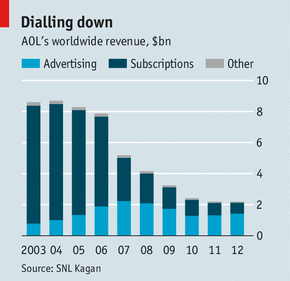
Categories: Strategic Management 4 | Topics | New Business Model |
Strategic Management 4 is all about the need for an organisation to revisit and redefine its business model in response to, or in anticipation of, sustained poor performance.
Categories: Strategic Management 4 | Course outline |


